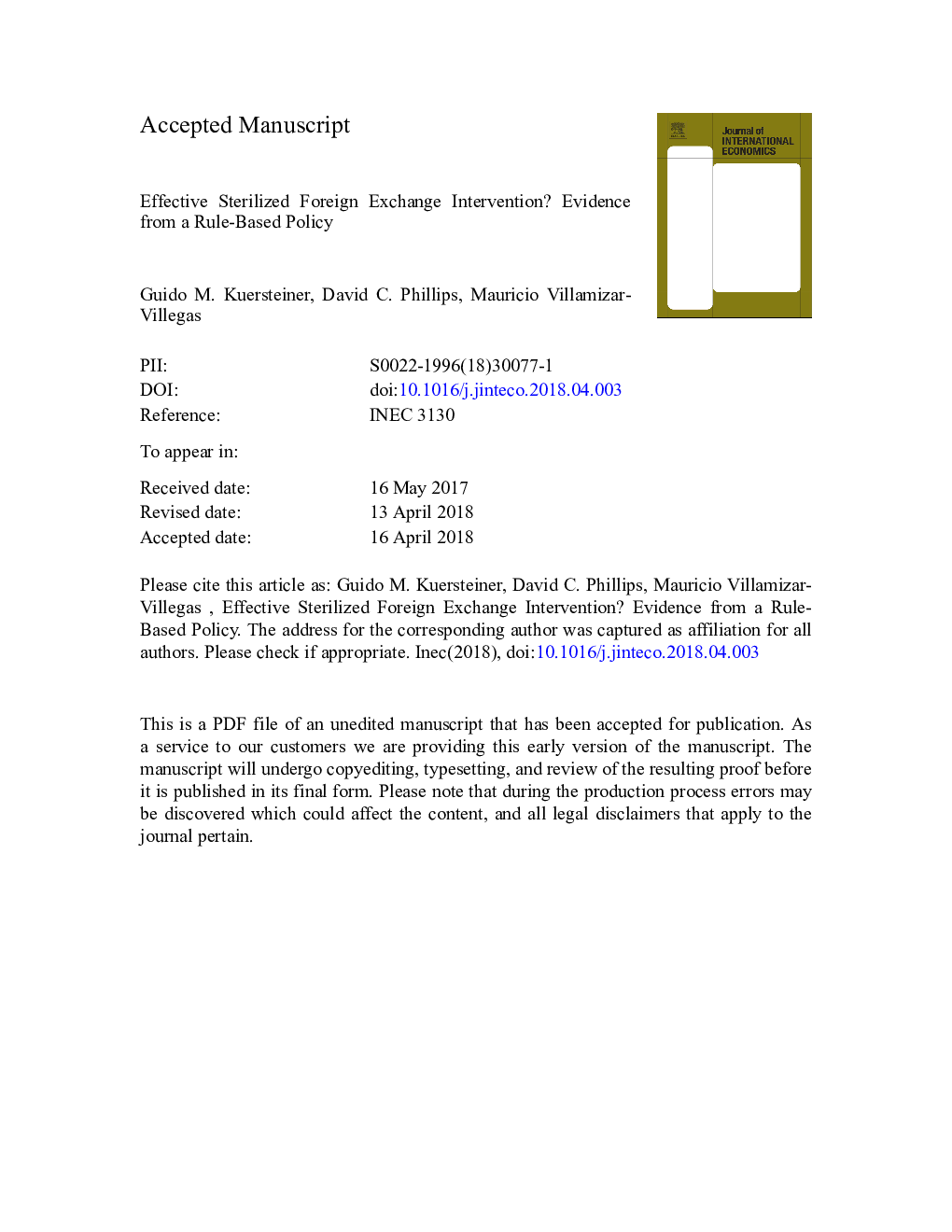| Article ID | Journal | Published Year | Pages | File Type |
|---|---|---|---|---|
| 7363863 | Journal of International Economics | 2018 | 51 Pages |
Abstract
This paper investigates the effectiveness of sterilized foreign exchange interventions by exploiting a discontinuous policy rule used by the Central Bank of Colombia. We use a unique data set that comprises tick by tick intervention and order book data, daily capital in- and outflows, and balance sheet information of financial institutions. We apply regression discontinuity methods to identify the surprise component of rule-based interventions and use this variation to measure how they affect exchange rates and capital flows. Our findings indicate that interventions had significant effects on the exchange rate, albeit short-lived (2-3â¯weeks). Moreover, capital controls amplify the effect of intervention, though some effect remains even in the presence of free capital flows. A methodological contribution of the paper is to extend regression discontinuity designs to a time-series environment and to show how these techniques can be used to identify and estimate local non-linear impulse response functions. A clearly defined policy rule and high frequency data are crucial in exploiting local variation around the policy cutoff.
Related Topics
Social Sciences and Humanities
Economics, Econometrics and Finance
Economics and Econometrics
Authors
Guido M. Kuersteiner, David C. Phillips, Mauricio Villamizar-Villegas,
